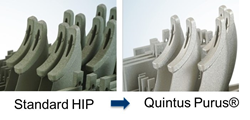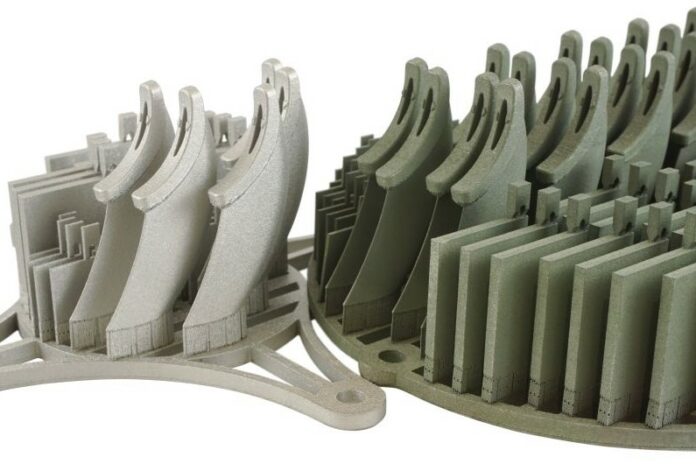With the goal of improving the production of critical parts such as medical implants, turbine blades, and rocket engine nozzles, Quintus Technologies has developed a toolbox that enables to get unoxidized component surfaces after Hot Isostatic Pressing (HIP). Called Purus Toolbox, the solution removes this way the need for difficult, costly, or hazardous pre- and post-processing.
“Oxidized component surfaces, and especially alpha cased titanium components—a brittle oxygen-enriched surface layer formed on titanium alloys during high temperature processes—are prone to crack initiation and therefore detrimental to component strength and reliability in operation,” explains Peter Henning, Director Marketing & Sales, Quintus Technologies. “The oxygen, causing the oxidation during the process, originates from various sources, all of which must be controlled to ensure component performance. The oxidation issue is today (when at all possible) mitigated either by manually wrapping of all individual components in metal foil before the process, or by removing all oxidized surfaces using machining or etching with chemicals after the process.”
Using the Quintus Purus toolbox, consisting of best practice in HIP operation, new HIP equipment hardware and software capabilities, and bespoke oxygen getter cassettes, most of these issues can be avoided or substantially reduced. This gives rise to design advantages and substantially reduces the cost and environmental impact of manufacturing components.
The issues around oxidized intricate surface structures and locations, which are difficult to inspect, are getting increased attention as additive manufacturing (AM) continues to expand the possibilities to design and build increasingly complex, functional structures. Examples of complex structures include trabecular structures designed for bone ingress of cementless medical implants, and the narrow media channels as used for cooling and fuel transport in high-temperature jet engines and space propulsion.
The concept behind Purus was developed, tested, and tuned over several years in Quintus Application Centers in Västerås, Sweden, and Columbus, Ohio, US, and then verified in beta testing by select partners requesting the functionality to support their business opportunities.
As the beta tests have shown that exceptional results can be achieved, the Quintus Purus toolbox is now made available as a retrofit to an existing Compact HIP system or as a feature to a new system.
Purus customers can opt to participate in Quintus® Care, a rigorous partnership program designed to reduce operational risks and provide trouble-free equipment operation. It also includes technical and application support and spare parts management.
“Having a Quintus Care contract allows for close collaboration on how Purus is used, optimized, and improved during the product lifecycle,” notes Mr. Henning.
“Purus makes it possible to produce ‘ready-for-use’ complex surfaces directly from the HIP process without having to manually wrap each component in metal foil, nor remove oxidized surfaces by machining or chemical etching after the process. This reduces energy consumption, cost of manufacturing, and the need for hazardous chemicals,” comments Jan Söderström, CEO and President, Quintus Technologies.
Remember, you can post job opportunities in the AM Industry on 3D ADEPT Media free of charge or look for a job via our job board. Make sure to follow us on our social networks and subscribe to our weekly newsletter : Facebook, Twitter, LinkedIn & Instagram ! If you want to be featured in the next issue of our digital magazine or if you hear a story that needs to be heard, make sure to send it to contact@3dadept.com.






